The strength of the B2B purchasing experience you offer on your site is a direct reflection of how well you understand, adapt to, and support the various steps that B2B buyers typically take with every purchase. Unlike retail, where buying decisions are often influenced by emotion and require little to no planning, B2B ecommerce is generally underscored by more technical and methodical approaches. In this blog, we’ll break down the major points of B2B buying, with suggestions for how to meet the needs of your buyers every step of the way.
1. Research and Discovery
- Objective: In the initial phase, B2B buyers are in exploration mode, sifting through a broad amount of information to identify products or services that meet their specific business needs.
- Hurdles: Navigating an overload of information, or the opposite—not finding enough detailed content to inform a purchase.
- Tip: In addition to comprehensive product data and descriptions, consider producing informational content around which your brand possesses strong subject expertise. This content should have the goal of establishing your brand as a subject authority, before you begin the process of selling. Incorporate educational resources such as blogs, videos, and downloadable guides to your site, to draw the attention of B2B buyers in research mode, and set the stage for the quality of your solutions.
2. Evaluation and Comparison
- Objective: The evaluation step is where B2B buyers dissect and compare various offerings, paying close attention to aspects like features, pricing, and benefits.
- Hurdles: A lack of an easy way to compare product attributes can make it hard to understand the relative strengths of each offering.
- Tip: Incorporate quick comparison charts listing important attributes of your product against competitors. You can also establish comparisons between your own products, helping buyers see the differences at various price levels and features at a glance.

3. Negotiation and/or Quote Requests
- Objective: One unique feature of the B2B purchasing experience is that buyers sometimes enter a phase of negotiation, seeking the best possible terms for their order. Part of this process might include requesting a formal price quote to share with their organization.
- Hurdles: Slow response times and a rigid pricing can be significant barriers at this stage.
- Tip: Price quotes are a powerful conversion driver for B2B buyers. Enhance the B2B purchasing experience with automated price quoting systems and self-service options that empower buyers to tailor their orders. This showcases your flexibility and understanding of B2B dynamics.
4. Purchase and Checkout
- Objective: The simple goal for buyers here is to move through a straightforward and secure transaction, one which respects the business' time and resources.
- Hurdles: Complex checkout systems and limited payment solutions can slow down the B2B purchasing experience, leading to cart abandonment.
- Advice: Prioritize a seamless checkout process which is uncluttered, easy to navigate, and loaded with options for payment and fulfillment. The more options you offer, the more you allow B2B buyers to shape a deal that works perfectly for their business.
5. Post-purchase Engagement
- Objective: Once the purchase is complete, B2B buyers might need help with their orders, or are simply looking to forge a long-term, beneficial relationship with the vendor in order to make their future needs easier to meet.
- Hurdles: Lack of sustained engagement and inadequate customer service can diminish customer enthusiasm and momentum after a sale.
- Advice: Sustain the positive momentum in the B2B purchasing experience by nurturing a robust post-purchase outreach program, characterized by very responsive customer support and customized follow-ups that are unique to an individual client or order. We wrote more about post-purchase ecommerce here.
A great B2B purchasing experience requires a deep understanding of the B2B buyer’s journey.
Recognizing the unique challenges at each step of the B2B buying process and aligning your ecommerce site to suit these specific needs can help you connect with this audience in a meaningful and lasting way. By always thinking about features that will make your buyers’ journey through your site easier, more informative, and more intuitive, you give your audience more reasons to choose your brand as their enduring partner.


About The Author
Katy Ellquist
Katy Ellquist, Miva’s Digital Marketing Strategist, is an accomplished writer, marketer, and social media analyst who has created sophisticated content campaigns for a broad range of professional clients. She brings to Miva a complex understanding of ecommerce trends and techniques, building upon extensive digital agency experience and a prior role as direct liaison to Miva’s top accounts. Katy is a regular contributor to the Miva blog, covering essential ecommerce topics like design & development strategy, site optimization, and omnichannel selling, with the goal of increasing the actionable knowledgebase of the entire Miva community.


